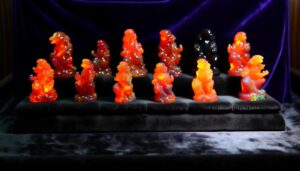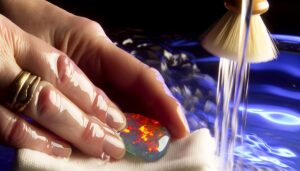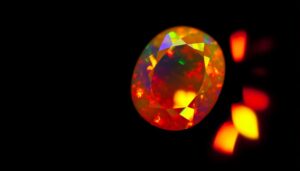What Gems Make Fire Opal’s Fiery Hue?
Fire opal forms when water percolates through silica-rich lava, dissolving silica and carrying it into cavities. The silica particles then settle and harden as the water evaporates.
This gemstone consists of hydrated silica (SiO₂·nH₂O), where water content significantly impacts its transparency and brilliance. Trace elements like iron and chromium influence its vibrant colors, ranging from reds and oranges to yellows and greens.
Found mainly in volcanic regions like Mexico and Ethiopia, fire opal's unique play-of-color results from microscopic silica spheres diffracting light. To appreciate its full history, significance, and care tips, consider exploring further.
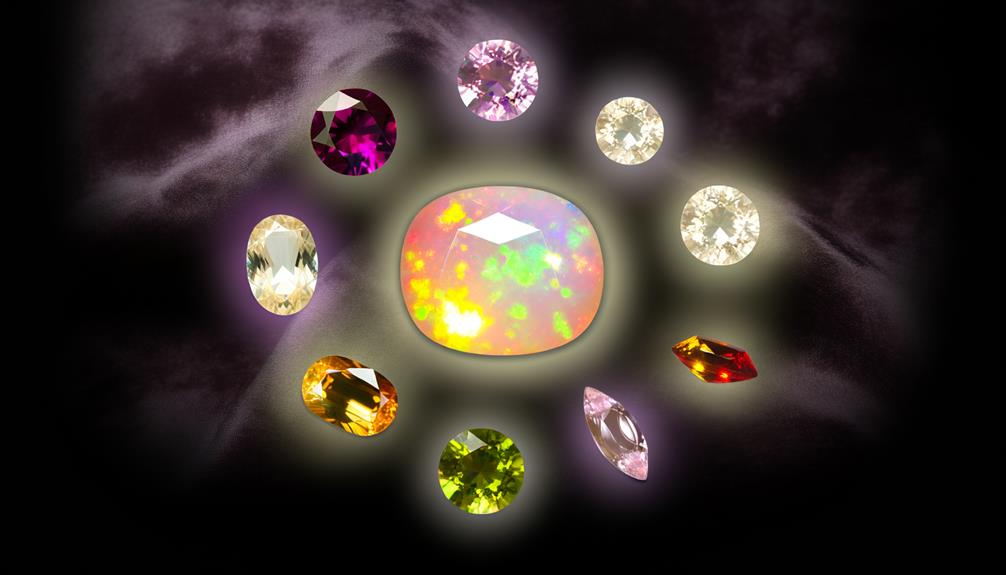
Key Takeaways
- Fire opals are primarily composed of hydrated silica (SiO₂·nH₂O).
- Trace elements like iron and chromium influence the colors of fire opals.
- The play-of-color phenomenon is due to the diffraction of light by microscopic silica spheres.
- Fire opals form in silica-rich lava through the process of water seeping and dissolving silica.
- Regions with volcanic activity, such as Mexico and Ethiopia, are primary sources of fire opals.
Formation of Fire Opal
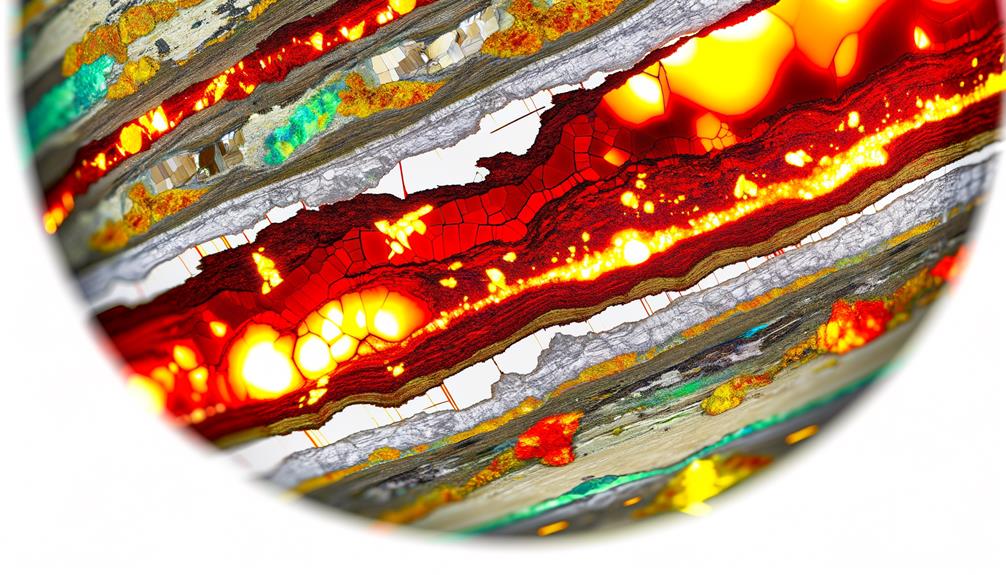
Fire opal forms when water seeps into silica-rich lava, causing a unique interplay of water and minerals. You can visualize this process as water infiltrating volcanic deposits, dissolving silica, and then carrying it into underground cavities.
Over time, the silica particles settle and harden, forming a gel-like substance. As water gradually evaporates, the silica particles compact further, creating the solid structure of fire opal. The conditions must be just right—adequate water content, specific temperature ranges, and appropriate pressure levels.
This formation process results in the vivid colors and fiery play of light that characterize fire opals. Understanding this natural phenomenon reveals why fire opals are so rare and highly valued among gemstones.
Chemical Composition
The chemical composition of fire opal primarily consists of hydrated silica (SiO₂·nH₂O), with water content playing an essential role in its structure and optical properties. This water content, ranging from 3% to 21%, influences the opal's transparency and brilliance. The amorphous nature of silica allows for light diffraction, creating the coveted play-of-color effect. Understanding these components helps you appreciate the gem's unique beauty and variability.
| Component | Description |
|---|---|
| SiO₂ | Silicon Dioxide |
| nH₂O | Variable Water Content (3-21%) |
| Amorphous Structure | Non-crystalline form of silica |
| Hydrated Silica | Combination of SiO₂ and H₂O |
| Optical Properties | Light diffraction and transparency |
Color Variations
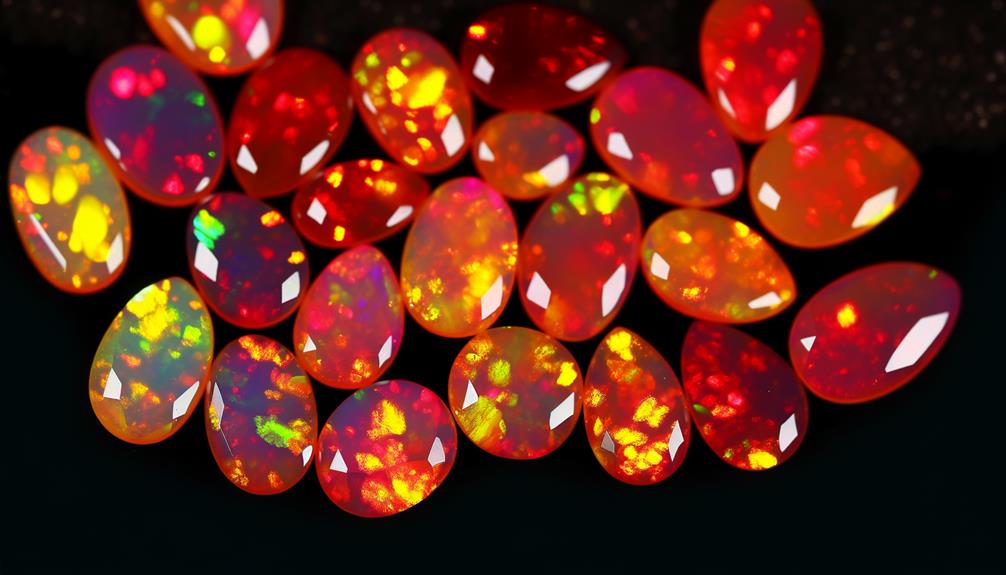
Understanding the chemical composition of fire opal sets the stage for exploring its color variations, which range from vivid reds and oranges to delicate yellows and greens. These hues originate from the presence of trace elements like iron and chromium within the silica matrix. The intensity of color can vary based on the concentration of these elements.
Reds and oranges typically result from higher iron content, while yellows and greens indicate lower levels or the presence of other impurities. Additionally, the internal structure of fire opals can influence their play-of-color, creating a dynamic visual effect.
Sources and Locations
In exploring the sources and locations of fire opal, you'll discover that this vivid gemstone is mainly found in regions with volcanic activity, particularly in Mexico. The Mexican states of Querétaro, Jalisco, and Hidalgo are renowned for producing high-quality fire opals. These regions possess the ideal geological conditions, such as silica-rich volcanic rock, conducive to fire opal formation.
Beyond Mexico, Australia and Ethiopia also provide notable sources. In Australia, fire opals are extracted from the opal fields of Lightning Ridge and Coober Pedy. Ethiopia's Wollo Province has emerged as a significant site due to its recent high-quality finds. By understanding these locations, you gain insight into the geological processes that create and sustain fire opal deposits.
Unique Optical Properties
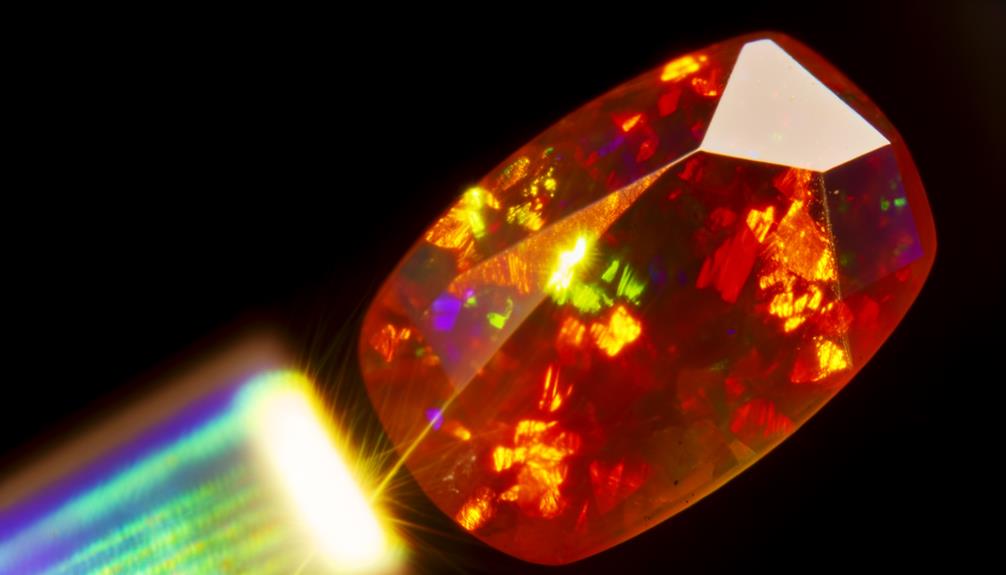
Fire opal dazzles with a unique play-of-color phenomenon, where light interacts with its internal structure to produce brilliant flashes of spectral colors. This optical effect arises due to the diffraction of light by the microscopic silica spheres within the opal.
When light enters the stone, it bends and breaks into various colors, creating vibrant patterns. The size and arrangement of these spheres determine the specific colors you see, ranging from vivid reds to deep blues.
Additionally, fire opals often exhibit a body color that enhances this play-of-color, typically in warm tones like yellow, orange, and red. The interplay between body color and spectral flashes makes fire opal a gem of exceptional allure and complexity.
Historical Significance
Throughout history, fire opal has captivated civilizations with its mesmerizing beauty and symbolic meanings. You'll find that ancient cultures attributed various properties to this vibrant gemstone.
The Aztecs, for instance, considered fire opals as symbols of passionate love and ardor. They often used these stones in rituals and jewelry, believing they held divine power.
In contrast, the Mayans believed fire opals could enhance creativity and intuition.
- Aztecs: Linked fire opals to passionate love and divine power.
- Mayans: Valued them for boosting creativity and intuition.
Ancient Greeks thought fire opals could bring foresight and prophecy. Victorians, on the other hand, used them as symbols of hope and purity.
Care and Maintenance
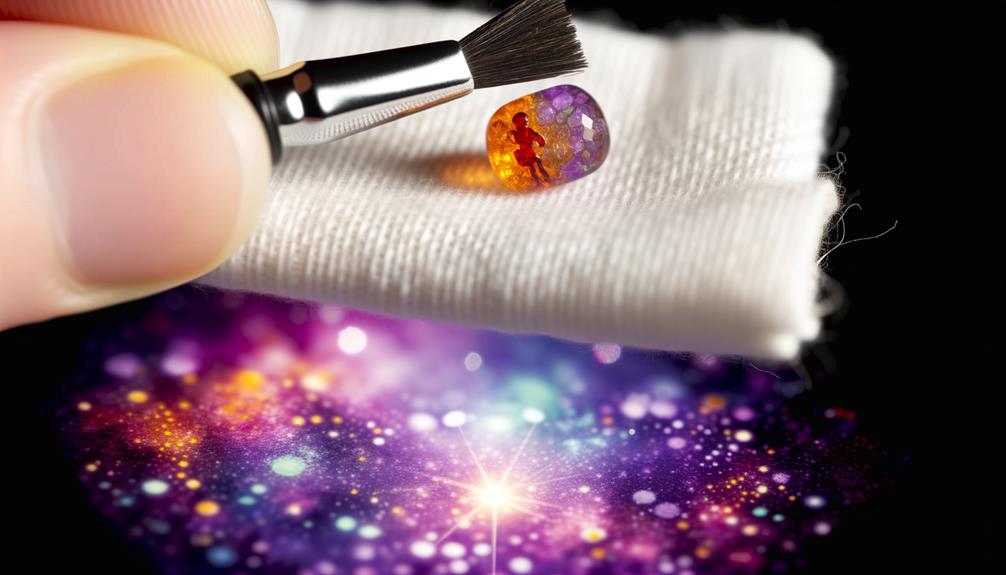
To maintain the fire opal's vibrant hues and structural strength, handle the gemstone with care and avoid exposing it to extreme temperatures or harsh chemicals.
Fire opals are relatively soft, with a Mohs hardness of 5.5-6.5, making them vulnerable to scratches. Store them separately in a soft pouch.
Avoid ultrasonic cleaners or steam cleaning, as these methods can harm the opal's delicate structure. When cleaning, use a mild soap solution and a soft cloth.
Hydration is essential—fire opals can lose water over time, leading to cracks. To prevent dehydration, occasionally immerse the opal in water for a short period.
Regular inspection by a professional jeweler guarantees early detection of any issues, preserving the gem's brilliance.
Conclusion
To wrap up, fire opals are created through silica-rich volcanic activity, showcasing a vibrant array of hues from their distinctive chemical composition. You might assume these gems are delicate, but with appropriate care, they retain their radiance.
Important origins such as Mexico and Ethiopia provide top-notch specimens. Their play-of-color and historical importance make them truly enchanting. Grasping their properties and origins guarantees you value and safeguard their beauty for generations.


